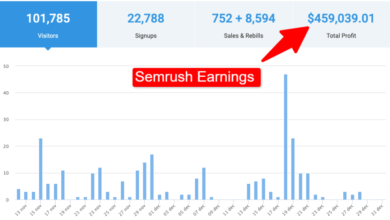How to sell on Etsy 2024

How to sell on Etsy 2024
Introduction
Etsy is an online marketplace focused on selling unique, creative, and handmade goods. It was founded in 2005 in Brooklyn, New York and has grown to become one of the world’s largest marketplaces for independent sellers.
Some key advantages of selling on Etsy include:
- Access to Etsy’s global marketplace of over 60 million active buyers. This provides a huge potential audience to find customers for your specialized and handcrafted goods.
- Etsy focuses specifically on handmade, vintage, or creative designs. So buyers come to Etsy looking for these type of specialized products not easily found elsewhere.
- Simple setup. Etsy sellers can quickly open a shop, list products, and start selling with minimal upfront investment.
- Built-in tools for marketing, processing payments, tracking orders, and managing your shop. This makes the selling process smooth and efficient.
- An established brand that buyers trust for finding unique and creative goods. Being part of the Etsy marketplace lends credibility.
As of 2022, Etsy has over 5.3 million active sellers, 120 million items for sale, and generated over $13 billion in Gross Merchandise Sales. It attracts over 90 million active monthly users. The marketplace continues to grow each year, underscoring the major opportunities Etsy provides for creative entrepreneurs and small businesses looking to reach a global audience of buyers.
Setting Up Your Etsy Shop
Setting up your Etsy shop is the first step to start selling on the platform. Here are some tips to get your shop ready:
Sign up for an Etsy account
- Go to www.etsy.com and click on “Register” to create an account. You’ll need to provide your name, email address, and create a password.
- Etsy allows you to open a shop for free. Paid plans with additional features are also available.
Choose your shop name, banner, and profile picture
- Your shop name will be part of your custom URL. Pick something memorable that represents your brand.
- Create an eye-catching banner with your shop name, products, or brand imagery.
- Upload a profile picture to personalize your shop and establish your brand identity.
Set up your shop sections
- The About section lets you share your story and processes.
- The Shop Policies outline your policies around shipping, returns, custom orders, etc.
- The Shop Story section allows you to share your inspiration.
Take time to customize these sections to share your brand story and build trust with customers.
Listing Your Products
Listing products effectively on Etsy is key to getting sales. You’ll want to invest time in preparing visually appealing product photos, writing compelling titles and descriptions, setting appropriate prices, and configuring shipping and processing times accurately.
Preparing Product Photos
Great photos are essential for catching shoppers’ eyes and making them interested enough to click for more details. Use high-resolution images taken on a clean, plain background with good lighting. Show multiple angles and include props or models to showcase scale and usage. Crop tightly around the product and edit photos to optimize brightness, color, and quality.
Writing Titles, Tags, Descriptions
Craft SEO-friendly titles that summarize the product well within 140 characters. Include relevant keywords that buyers may search for.
In the tags, include additional keywords and descriptive words related to the item to help it surface in searches.
Write detailed descriptions that sell the product’s features, quality, materials, and uniqueness. Tell the item’s story and history if applicable. Specify all details like colors, sizes, and embellishments.
Pricing Guidelines
Research competitive pricing for similar items in your niche. Factor in the cost of materials plus your time and effort. Price high enough to be worthwhile without overpricing. Offer promotions and sales periodically.
Processing Times, Shipping Profiles
Set accurate processing and shipping times in your policies to manage expectations. Offer fast shipping like 1-3 days for domestic. Configure shipping profiles for destinations you ship to with accurate rates. Streamline this as your shop grows.
Promoting Your Shop
Promoting your Etsy shop is crucial for driving traffic and making sales. Here are some of the most effective promotion strategies on Etsy:
Using Etsy Search Engine Optimization
Etsy has its own internal search engine that customers use to find products. You’ll want to optimize your listings so they rank highly in Etsy search results. Here are some tips:
- Include relevant keywords in your title, tags, description, and other listing fields. Research keyword demand using Etsy’s keyword tool.
- Write high-quality, detailed product descriptions that include keywords shoppers may search for.
- Consistently fill out all applicable fields for each listing. More complete listings tend to rank better.
- Renew your listings frequently to bump them back to the top of search results.
Social Media Marketing Tips
Leverage social platforms like Instagram, Facebook, and Pinterest to promote your Etsy shop and products:
- Create social media graphics and videos showcasing your products. Drive traffic back to your shop.
- Engage with your audience by posting regularly, responding to comments and questions.
- Run occasional social promotions like giveaways and contests to build your following.
- Use relevant hashtags and keywords in your social posts to improve discovery.
Collaborating with Other Sellers
Partnering up with complementary Etsy shops can expand your reach:
- Cross-promote each other’s items and do “shop takeovers.”
- Organize joint giveaways.
- Create bundled product offerings across both shops.
- Share wholesale supplier information and materials.
- Split costs on marketing campaigns you run together.
Working creatively with other sellers helps tap into new audiences interested in your products!
Providing Excellent Customer Service
Providing excellent customer service is crucial for success on Etsy. As an Etsy seller, you are essentially running your own small business, and customer satisfaction will make or break you. Here are some tips for wowing customers and keeping them coming back:
Communication Methods and Response Times
- Respond to customer inquiries and orders within 24 hours. Set up email alerts so you don’t miss a message.
- Be available for conversations. Have a system to manage conversations within Etsy and convos about open orders.
- Let customers know you received their inquiry and give an estimated response time if you can’t answer right away.
- Reply to each message individually and avoid mass replies. Customers want that personal touch.
- If conversations need to move off Etsy, provide your contact info. But don’t ask customers to contact you outside Etsy until after a sale is complete.
Resolving Issues Proactively
- If something goes wrong with an order, refund or replace the item as quickly as possible. A fast resolution leaves customers satisfied.
- Don’t blame the customer if they received a defective or wrong item. Take responsibility and fix the problem.
- If shipping takes longer than stated, let customers know the reason and expected delay.
- Follow up after resolving an issue to make sure customers are happy with how it was handled.
Importance of Reviews
- Ask satisfied customers to leave a review. Positive reviews build credibility for your shop.
- Address any negative reviews promptly and with care. Offer a refund or replacement.
- Learn from negative reviews to improve your products or processes. Then let future customers know the steps you’ve taken.
- Reply publicly to reviews when appropriate to show customers you value their feedback.
Providing excellent service takes effort but pays off with repeat business and word-of-mouth recommendations. The time invested will build loyalty and your reputation over the long run.
Growing Your Shop
As your Etsy shop matures, you’ll want to focus on growing your business in a sustainable way. Here are some tips for expanding your shop:
Analyzing Shop Stats
Pay close attention to your shop stats in Etsy to understand what’s working well. Look at your traffic sources, conversion rates, best-selling items, and any seasonal trends. Use this data to make informed decisions about what to adjust in your shop. For example, if a particular item has a high conversion rate, consider adding more similar products.
Experimenting with New Products
Don’t get complacent with your existing product lineup. It’s important to continue experimenting with new items to give customers variety and stay current with trends. Try out new product styles, variations on bestsellers, or seasonal offerings. Use promotions to test demand for new products before fully committing.
Joining Etsy Teams/Forums
Connect with other Etsy sellers in the Etsy Teams forums. You can join team conversations related to your product category or overall selling topics. This is a great way to get product ideas, marketing tips, and solutions to issues you encounter. Learn from the experiences of successful Etsy sellers who have grown their shops over time.
Maximizing Sales
Driving sales for your Etsy shop takes some strategic planning and effort. There are several key ways sellers can maximize their sales on Etsy:
Utilizing Etsy’s Promoted Listings
One of the most powerful tools Etsy offers is Promoted Listings. This is an advertising model that allows you to pay to promote certain listings higher in search results. Setting up Promoted Listings and finding the right bid amount to generate sales without spending too much on ads takes some testing and optimization. But many top Etsy sellers find Promoted Listings drive significant extra sales.
Offering Discounts and Bundles
Running sales, offering sitewide discounts, or creating bundled listings of multiple products are great ways to boost conversions. You can announce sales through Etsy’s onsite messaging tools or on social media. Bundling products that naturally go together also encourages customers to spend more per order. Just be sure any discounts or bundles still allow you to turn a profit.
Planning Seasonal Launches
Pay attention to key seasons or holidays when planning new product launches and sales. For example, promoting summer-themed products in spring or holiday gifts leading up to peak times like Christmas. Timing your listings and inventory levels to seasonal demand will allow you to maximize key opportunities throughout the year.
Making the most of promotional tools, structured sales, and seasonal launches takes some experience. But sellers who learn to optimize these aspects tend to see much higher sales volumes and revenue growth over time. So focus on continually improving and experimenting to maximize your Etsy shop’s sales potential.
Streamlining Operations
Running an Etsy shop requires managing many different tasks and processes. Streamlining operations where possible can help maximize efficiency and give you more time to focus on important areas like product development and customer service. Here are some tips for streamlining operations:
Use Project Management Systems
Consider using project management software or apps to organize tasks and track progress. Popular options like Trello, Asana or Airtable allow you to create boards or tables to map out projects and assign due dates. This gives you an overview of upcoming deadlines and ensures tasks don’t fall through the cracks. Checklists and automation features can further improve workflows.
Automate Processes Where Possible
Look for ways to automate repetitive tasks like inventory management, order processing and shipping label creation. Etsy and other platforms integrate with shipping carriers and third-party apps to simplify these processes. Setting up rules and triggers can streamline order fulfillment. Investing in a thermal label printer can automate shipping label creation.
Manage Inventory
Use Etsy’s inventory management system or third-party software to closely track product listings and inventory levels. Setting up alerts for low stock can prompt you to reorder materials. Organize digital files and physical products so you can easily locate them when needed. Perform occasional inventory audits to ensure counts match your digital systems. Develop efficient order fulfillment procedures to get orders processed quickly.
Automating processes, managing inventory systematically, and tracking key tasks goes a long way in streamlining shop operations. This allows focusing energy on other vital business aspects. Evaluate what can be systematized, and invest where workflow improvements will have the biggest impact.
Staying Compliant
As your Etsy shop grows, it’s important to make sure you are staying compliant with all relevant laws, regulations, and Etsy policies. This helps protect your shop and ensures you don’t run into issues down the road.
Following Etsy Policies
Carefully read through Etsy’s policies to understand what is allowed and prohibited on Etsy. Some key policies to review include:
- Listing policies – Requirements around product information, intellectual property, prohibited items, etc.
- Seller policies – Policies around shop suspension, order issues, reviews, etc.
- Fee policy – Etsy’s fees for listing, transactions, payments, etc.
Follow all policies to avoid policy violations which could lead to your shop being suspended. If in doubt, reach out to Etsy for clarification.
Understanding Taxes, Licensing, and Regulations
As your shop grows into a real business, be aware of your tax and legal obligations.
- Sales tax – Once you reach economic nexus thresholds for states, you may need to collect and remit sales tax. Use a service like TaxJar to manage sales tax properly.
- Income tax – Report your Etsy income and expenses on your tax return. Track all business expenses so you can deduct them.
- Business license – Depending on your local laws, you may need a business license or permit to operate your Etsy shop legally. Research requirements for your state and municipality.
- Product regulations – Ensure your products meet safety standards like CPSIA requirements for children’s products. Certain products like alcohol or firearms have additional regulations.
- Data protection laws – Comply with laws like the EU’s GDPR if selling internationally. Remove customer data upon request and get consent before using data like emails.
Following tax laws and obtaining proper licenses protects your shop. Research requirements early as your shop grows to stay compliant. Being aware of regulations for your products also ensures listings don’t get removed.
Future Opportunities
Selling on Etsy provides a great opportunity to test and validate your products and brand. As your shop grows, you may consider expanding to other sales channels or establishing your own ecommerce site. Here are some future opportunities to consider:
Expanding to Other Platforms
Once you’ve built up your shop and established processes on Etsy, you can consider expanding to other marketplaces like Amazon, eBay, or specialty sites related to your products. Listing on multiple platforms gives you access to new customers. However, make sure you have the inventory, systems, and bandwidth to manage multiple sales channels.
Building Your Own Ecommerce Site
Having your own ecommerce website allows you to fully control the branding, design, and customer experience. It also provides more sales data and removes the fees paid to Etsy. Building your own site takes significant time and investment but gives you the most flexibility long-term. You’ll need a domain, ecommerce platform, payment processing, marketing strategy, and resources to manage it.
Brick-and-Mortar Expansion
A physical retail space can complement your online sales, especially if you create products that customers like to see and experience in person. Pop-up shops, trade shows, and craft fairs are ways to test physical retail with lower risk and cost. If these go well, you may consider a permanent physical location. Ensure you have the staffing and operations to handle in-person sales.
The future is wide open when you have an established, successful Etsy shop. Keep improving your operations and exploring opportunities to expand your customer reach through other channels and locations. The key is growing sustainably at a pace you can manage.
READ MORE: The best ways to increase the cost per click in your AdSense account




